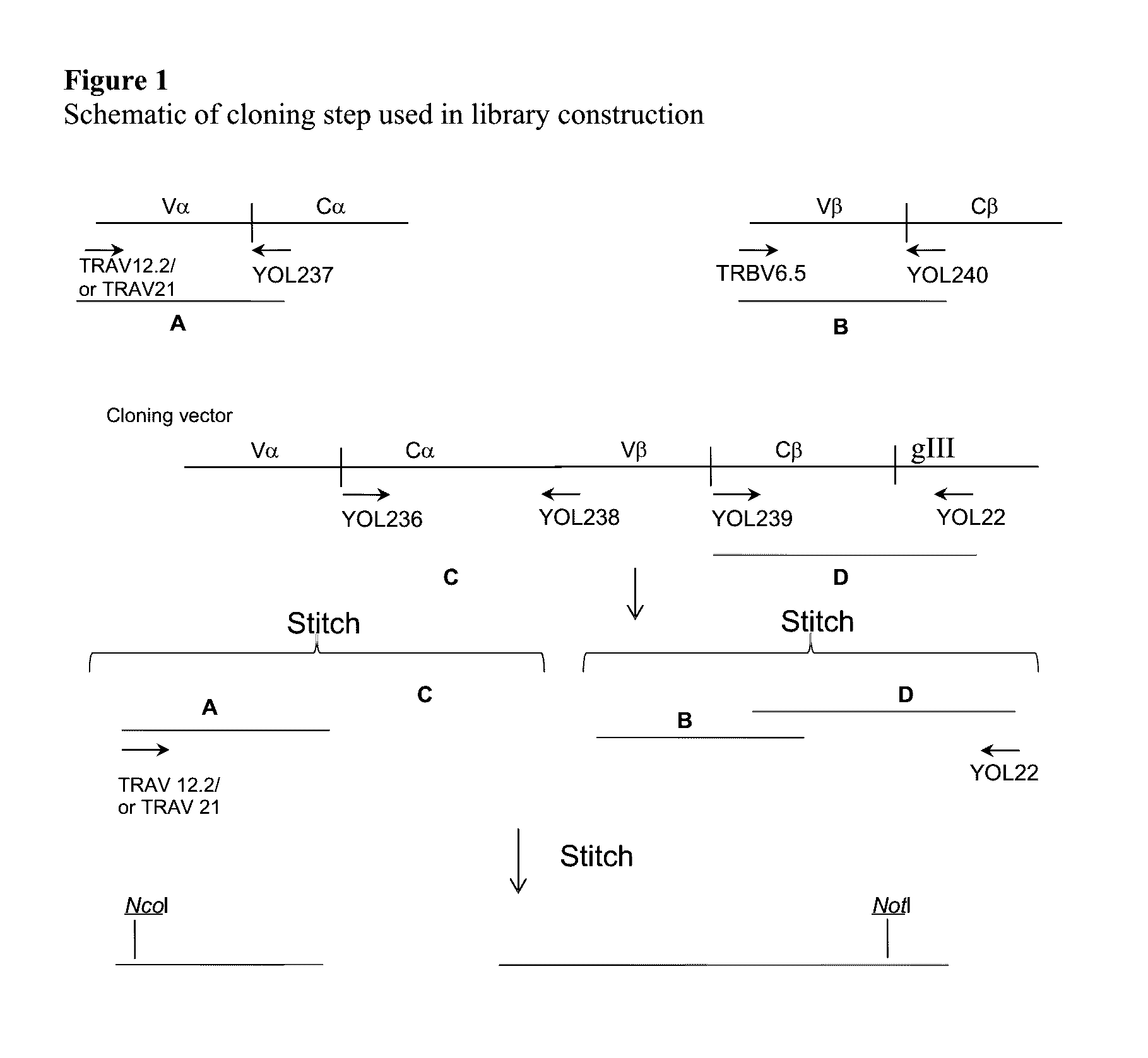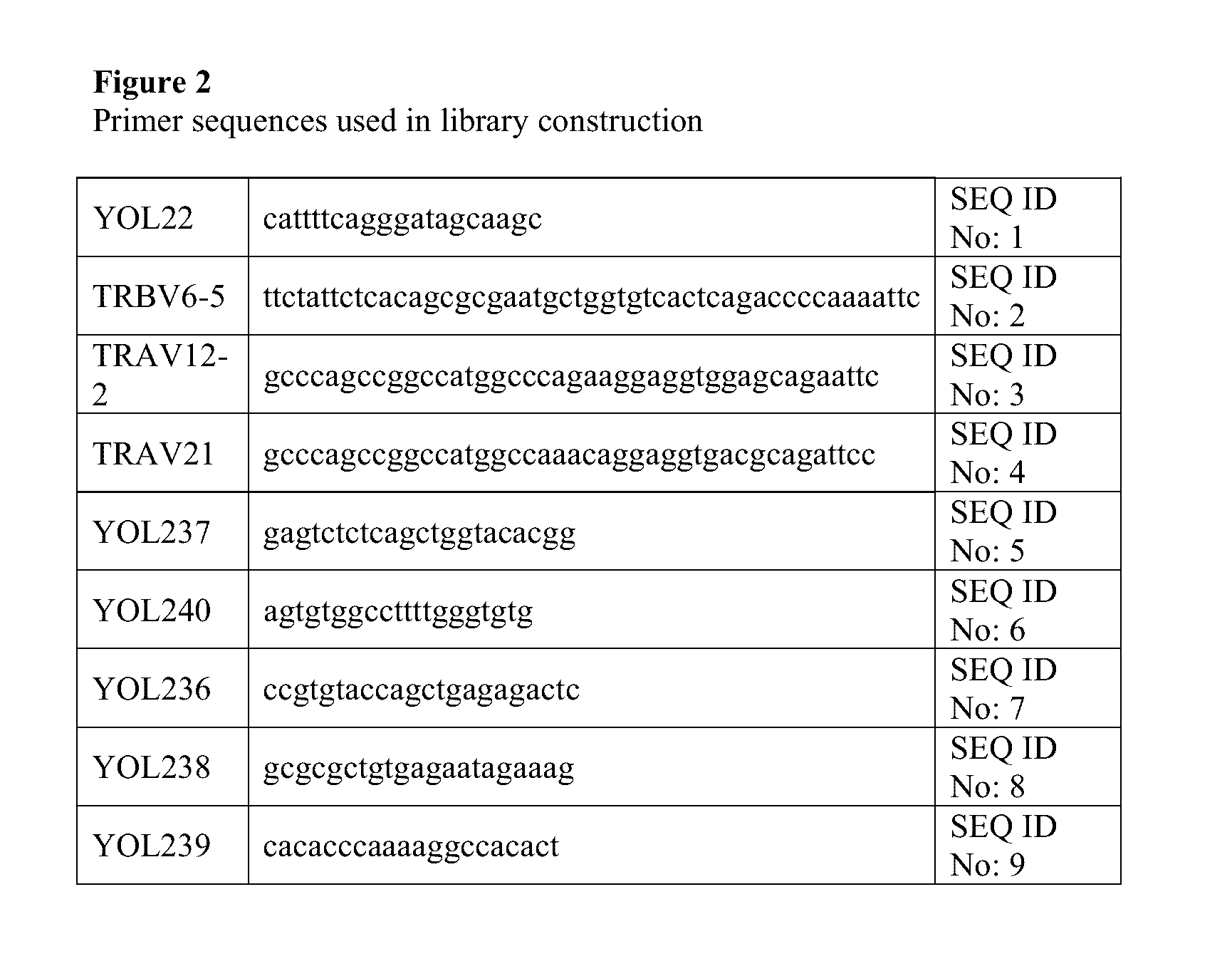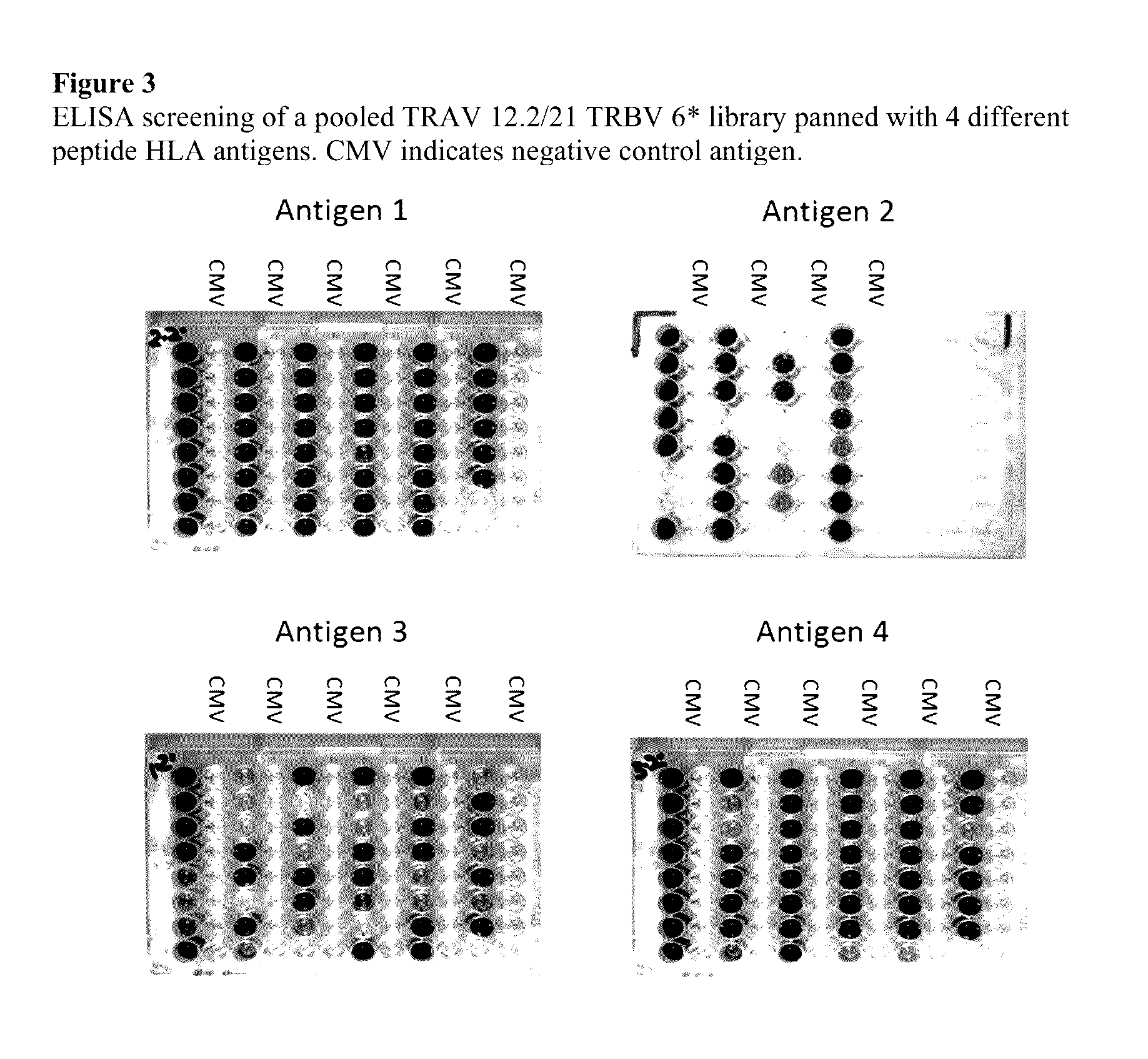Tcr libraries
a technology of tcr libraries and tcrs, applied in the field of tcr libraries, can solve the problems of long process and labour intensive, difficult to identify tcrs that specifically bind to disease-associated antigens, and difficult to isolate them historically, and achieve the effect of reliable identification and enhanced affinity
- Summary
- Abstract
- Description
- Claims
- Application Information
AI Technical Summary
Benefits of technology
Problems solved by technology
Method used
Image
Examples
example 1
Preparation of cDNA for Construction of TRAV12.2 / TRBV6* and TRAV21 / TRBV6* Native TCR Phage Display Libraries
[0167]Isolation of mRNA from Peripheral Blood Lymphocytes (PBLs)
[0168]RNA was extracted from a pool of approximately 30 million PBLs obtained from three donors of known HLA type. RNA extraction was carried out using TRI reagent (Sigma, Cat. No. T9424), in accordance with the manufacturer's recommended protocol. mRNA was subsequently isolated using μMACSTm mRNA Isolation Kits (Miltenyi, Cat. No. 130-075-101), as directed by the manufacturer.
[0169]Preparation of cDNA from mRNA
[0170]cDNA was synthesised from the mRNA using SMARTScribeTm Reverse Transcriptase (Clontech, 639536), in accordance with the manufacturer's recommended protocol. cDNA was further purified using S.N.A.P. Gel Purification Kit (Invitrogen, 45-0078).
example 2
Phage Library Construction
[0171]An outline of the library construction is shown in FIG. 1 and the corresponding primer sequences detailed in FIG. 2. TCR chains were amplified by PCR from purified cDNA using TRAV12.2, TRAV21 or TRBV6* forward primers and reverse primers which anneal within either the TRAC (primer YOL237) or the TRBC regions (primer YOL 240). The primer sets were designed with reference to the known sequences of human TCR chains (T Cell Receptor Facts Book, Lefranc and Lefranc, Publ. Academic Press 2001). The resulting PCR products comprised the full variable domain sequence and a truncated constant domain (labelled A and B in FIG. 1). The remaining C-terminal section of the TRAC and TRBC2 domains, containing the non-native cysteine residues, were amplified by PCR from a separate cloning vector using the primers YOL236 and YOL238 for TRAC, and YOL239 and YOL22 for TRBC2 (labelled C and D in FIG. 1). Purified A / C and B / D fragments were then stitched together in separat...
example 3
Library Propagation and Panning
[0172]Propagation of Phage Particles
[0173]An aliquot of phage library glycerol stock, sufficient to cover the diversity of the library, (TRAV12.2 / TRBV6 and TRAV21 / TRBV6) was used to inoculate 2×YTag media, to an initial OD600 of 0.05. The cultures were then incubated to an OD600 of about 0.5. Helper phage were then added at an infection ratio of ˜20:1 phage to E. coli, The cultures were then mixed by inverting and incubated for 30 min at 37° C. The cultures were centrifuged and the pellets resuspended in 2×YTak (as 2×YTag but in the absence of glucose and with the addition of 50 μg / ml kanamycin) and subsequently incubated at 26° C. for 16 h with shaking.
[0174]Isolation of Phage Particles
[0175]The cultures were pooled, centrifuged and the supernatant collected and filtered at 0.45 μm. The eluate was mixed with 7 ml PEG / NaCl (20% PEG-8000 (Sigma Cat. No. 5413), 2.5M NaCl) and incubated on ice for 30 min. The sample was then pelleted and the supernatant d...
PUM
| Property | Measurement | Unit |
|---|---|---|
| Molar density | aaaaa | aaaaa |
| Molar density | aaaaa | aaaaa |
| Molar density | aaaaa | aaaaa |
Abstract
Description
Claims
Application Information
 Login to View More
Login to View More - R&D
- Intellectual Property
- Life Sciences
- Materials
- Tech Scout
- Unparalleled Data Quality
- Higher Quality Content
- 60% Fewer Hallucinations
Browse by: Latest US Patents, China's latest patents, Technical Efficacy Thesaurus, Application Domain, Technology Topic, Popular Technical Reports.
© 2025 PatSnap. All rights reserved.Legal|Privacy policy|Modern Slavery Act Transparency Statement|Sitemap|About US| Contact US: help@patsnap.com



